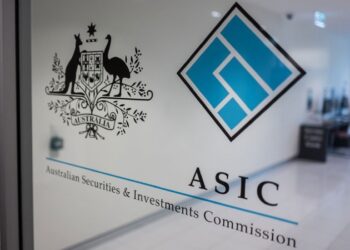Since the launch of Australia’s first ETFs more than two decades ago, the local industry has grown from a humble $100,000 in assets under management (AUM) to almost $153 billion.
Reflecting on the drivers of this “impressive growth” over the past 22 years in a recent note, Betashares investment strategist Tom Wickenden described core equity index ETFs as being the “bedrock” of the Australian ETF industry.
Eight of the 10 largest ETFs in Australia are core equity index funds, Mr Wickenden said. Together, these eight funds account for $45 billion or 30 per cent of total industry AUM.
“The growth of ETFs globally has been synonymous with the popularisation of low-cost, broad benchmark equity index investing. Australia’s story has been no different,” he said.
“A greater understanding of the benefits of broad market benchmark index investing through research and education, such as S&P’s SPIVA reports, came at a similar time to the creation of ETFs.
“The marrying of these investing advancements provided investors with easy-to-transact, low-cost access to diversified portfolios. This style of ETF, tracking broad equity market benchmarks, remains the most popular today.”
According to Betashares, there are a total of 24 core equity index ETFs available in the Australian market, accounting for $60 billion or 40 per cent of the industry’s AUM.
While core equity index funds remain the largest ETF category, Mr Wickenden noted that the category’s share of AUM has declined from close to 60 per cent in 2011, as other types of ETFs helped to fuel industry growth since then.
Active ETFs are the second largest category with a 15 per cent share of industry AUM.
While the number of active ETFs has jumped from 35 to 82 in the past three years, Mr Wickenden said the category suffered net outflows of $2 billion over this period (excluding existing unlisted active funds converted to ETFs).
A notable development in recent times has been the high level of investor interest in cash and fixed income ETFs, which recorded billions of dollars of inflows in the past year.
“The last time the Australian 10-year government bond yield was 4.5 per cent p.a. there were no cash or fixed income ETFs listed in Australia. Today there are 53,” Mr Wickenden said.
“As fixed income markets enter this new era, the availability of fixed income ETFs for Australian investors has seen a noticeable trend in investor preferences. Over the 18 months to August 2023, cash and fixed income and ETFs saw $8 billion in inflows while unlisted fixed income funds saw $12 billion in outflows.”
These flows, Mr Wickenden said, have been a driving force in industry growth over the past year, with cash and fixed income ETFs accounting for 56 per cent of all net flows.
Elsewhere, “green shoots” were highlighted for ESG ETFs. The number of ESG-related funds has increased from 16 to 57 in the past four years. These ETFs lifted their share of industry AUM from 2 per cent to 7 per cent over this period.
Steady growth has been observed for smart beta ETFs, which now number 45 and account for 11 per cent of the industry’s AUM. Meanwhile, thematic ETFs account for only around 3 per cent of AUM, the smallest share in the categories analysed by Betashares.
“Investors can now access over 350 investment strategies as ETFs on the ASX covering all major asset classes from a range of passive and active investment managers,” said Mr Wickenden.
“There is the potential for the industry to grow to a trillion dollars, perhaps even within the next 10 years if this rate of growth continues and the industry achieves the same level of penetration as the US ETF industry.”






